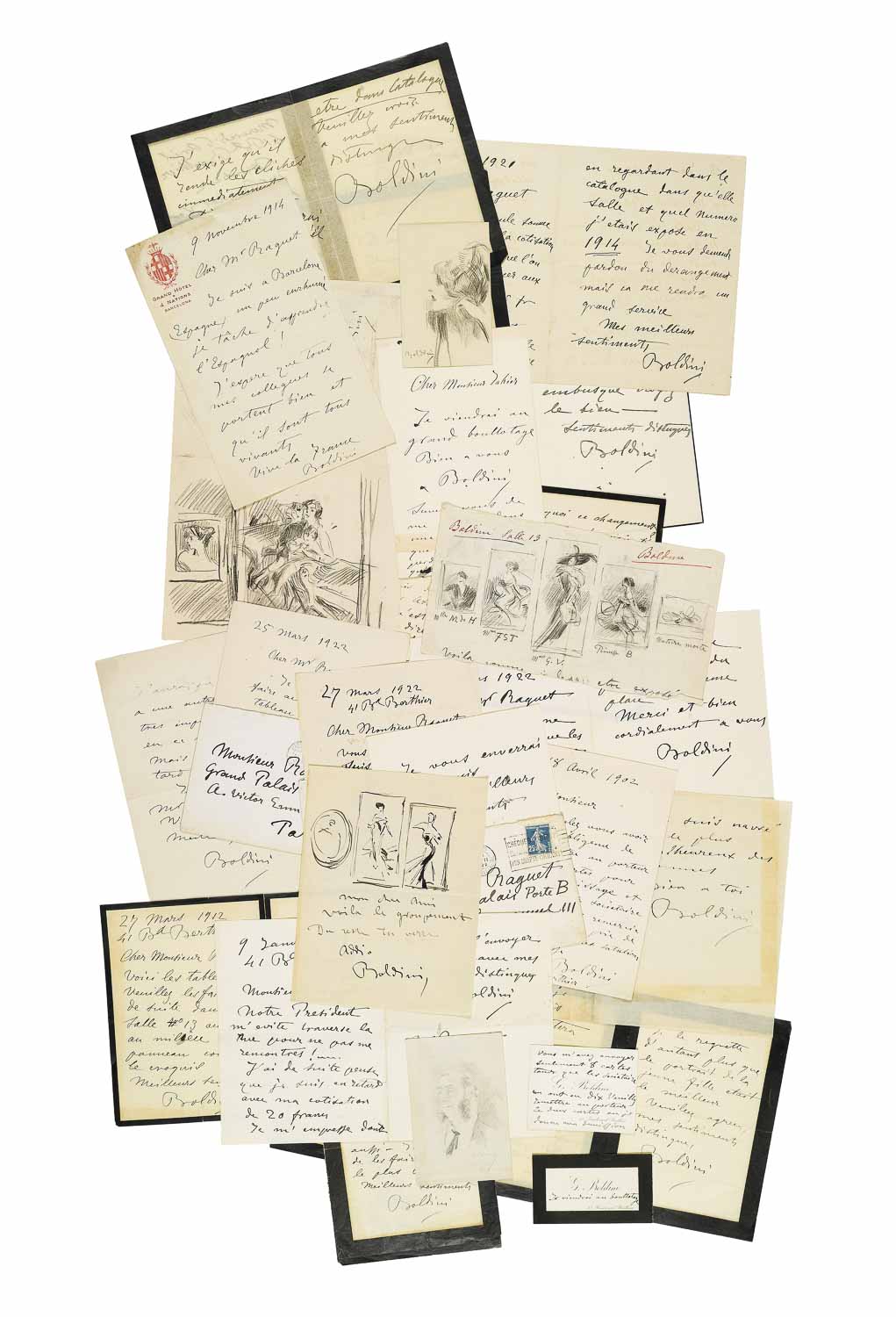GIOVANNI BOLDINI
(Ferrara 1842 – Parigi 1931)
Collection of letters and sketches
Ink and pencil on paper
Various sizes
This interesting collection of letters and drawings illustrates the daily correspondence the Italian-born French painter Giovanni Boldini kept with different people.
Historically speaking, the most interesting part of this collection is undoubtedly the correspondence he kept for almost twenty years with the French Société Nationale des Beaux Arts. In these letters, Boldini clearly illustrated how he wanted his works to be laid out in the rooms of the Parisian Salon during those years.
To give an example, in a very detailed red-ink drawing named ‘Boldini Salle 13’ he made for the Salon in 1911, the artist showed his layout project for four female portraits and a still life.
Even though they are hand-drawn pencil sketches, the people Boldini portrayed are quite recognizable, also thanks to the notes he added under each of them. Starting from the left, we can see the half-bust portrait of a woman accompanied by the note ‘Mlle M. de H.’, namely the portrait of Mademoiselle Julia Helena Martinez de Hoy to whom Francesca Dini in the catalogue raisonné of the artist refers as: ‘Signora con stola e pelliccia scura’, Boldini (Dini, 2007, note no. 1046). The second portrait from the left is followed by the note ‘Mme FST’ and refers to a painting of 1911, location unknown, better known as ‘Ritratto di signora con una lunga collana di perle’ whose identity is still un- known (Dini, 2007, no. 1032). A place of honour is then given to Madame Guilliaume Vanderbilt in a central full figure portrait of 1910 where she is wearing an evening gown and a wide-brim hat. The portrait is accompanied by his note reading: ‘Mme G. V.’. Second to last, comes the famous portrait of princess Marthe-Lucille Bibesco on a sofa made in 1911 and now belonging to a private collection. Boldini refers to her affectionately as ‘Princesse B’. Finally, there is a still life with no further details.
This collection also includes several letters edged in black as it was for mourning paper. Boldini came from a large family, and he was the eighth of thirteen children. Some died between the first and the second decade of the 20th century, which would explain why the artist used this kind of paper for his correspondence.


